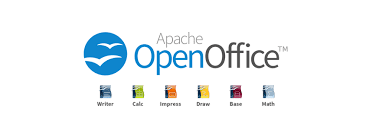How to succeed in B2B sales prospecting
B2B sales prospecting: how to succeed ?
Prospecting is the first phase of the sales cycle, regardless of the size and activity of a B2B company. The team must then actively participate in this business process on a daily basis. However, the operation can sometimes be particularly time-consuming.
It is therefore essential to adopt a methodology and a coherent marketing strategy to achieve the objectives set beforehand.
How to do B2B sales prospecting ?
The B2B sales prospecting is defined by its audience of companies and professionals. This feature is both advantageous and problematic. Indeed, the target profiles are relatively homogeneous compared to the general public market.
You will be able to use specialized methods and tools such as the solutions available on https://blog.waalaxy.com/. You will then be able to automate and optimize your campaigns on LinkedIn.
A professional clientele allows you to limit the targeting and the zoning of the prospection. However, you must first determine which virtual and real sites are likely to gather potential customers. To know this, you need to identify and study your target audience.
This knowledge of prospects necessarily requires good preparation and information gathering.
On the other hand, B2B customers are much more demanding than consumers in the B2C market. You must therefore train your sales team to master your offer and anticipate the sensitive points for your customers. The training also allows you to perfect your marketing arguments in order to be credible and persuasive in front of experts in their respective fields.

Which channels to use ?
LinkedIn groups are particularly interesting for making a B2B sales prospecting. Indeed, they allow you to focus on professionals with the same interests on the social network. However, the technique requires a digital strategy and another powerful lever such as emailing.
Moreover, it is important to use automation tools to gain efficiency on both channels.
Telephone calls are not outdated. They are still as effective as ever, as long as you adopt the right approach. To be successful in cold calling prospecting, for example, you will need to :
- Research and collect data on prospects;
- Develop a direct, concise and adapted script for the campaign ;
- Focus on transparency and get straight to the point;
- Define precise and realistic objectives;
- Study the timing of cold calls;
- Encourage exchanges and gradually accelerate the pace;
- Keep the conversation going for at least five minutes to improve the chances of conversion;
- Avoid boilerplate questions from telephone operators and stay focused on the target profile;
- Pay attention to the reactions of the interlocutor and adapt without deviating too much from the script;
- Mentioning a known competitor to hold the prospect’s attention;
- Use a powerful CRM to correctly use the customer files, enrich the database and record the errors to avoid in the future for each profile.
With warm calling, the prospect is already engaged in the conversion funnel. The results are therefore promising. That said, this type of operation requires a good knowledge of your different interlocutors. You will then be able to target the prospects that have a significant interest in your offer.
Finally, trade shows and other conferences remain a safe bet for B2B commercial prospecting.

